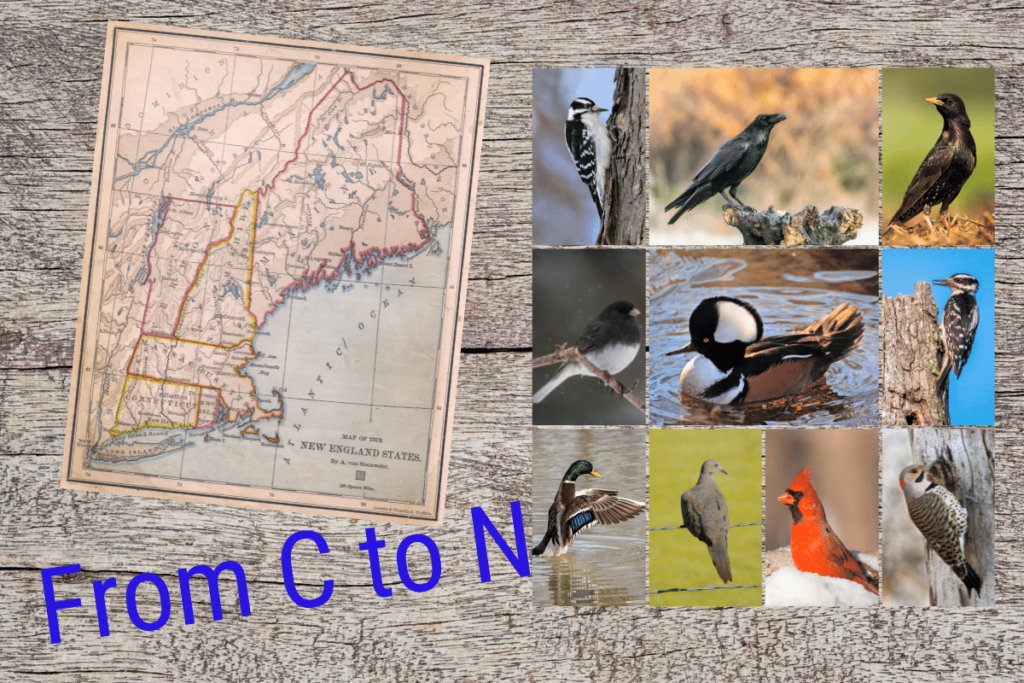This is the last post in my common New England bird calls series. If you have not read the other two articles in the series, you can find them here. All of the birds included here are common in all 6 states of New England all year round.
If you are searching for a particular bird call you have heard, you should hopefully find it here or in one of the other articles in this series. Where possible, I have tried to include calls recorded in New England states. As there are no common birds whose names begin with N or O, this article will start with the Pileated Woodpecker.
- 1. Pileated Woodpecker
- 2. Red-breasted Nuthatch
- 3. Red-winged Blackbird
- 4. Song Sparrow
- 5. Tufted Titmouse
- 6. White-Breasted Nuthatch
- 7. White-Throated Sparrow
- 8. Wild Turkey
- 9. Wood Duck
- 10. Yellow-bellied Sapsucker
- 11. Myrtle Warbler
- Conclusion
- 10 Common New England Bird Calls From A to C
- 10 Common New England Bird Calls From C to N
- References
1. Pileated Woodpecker
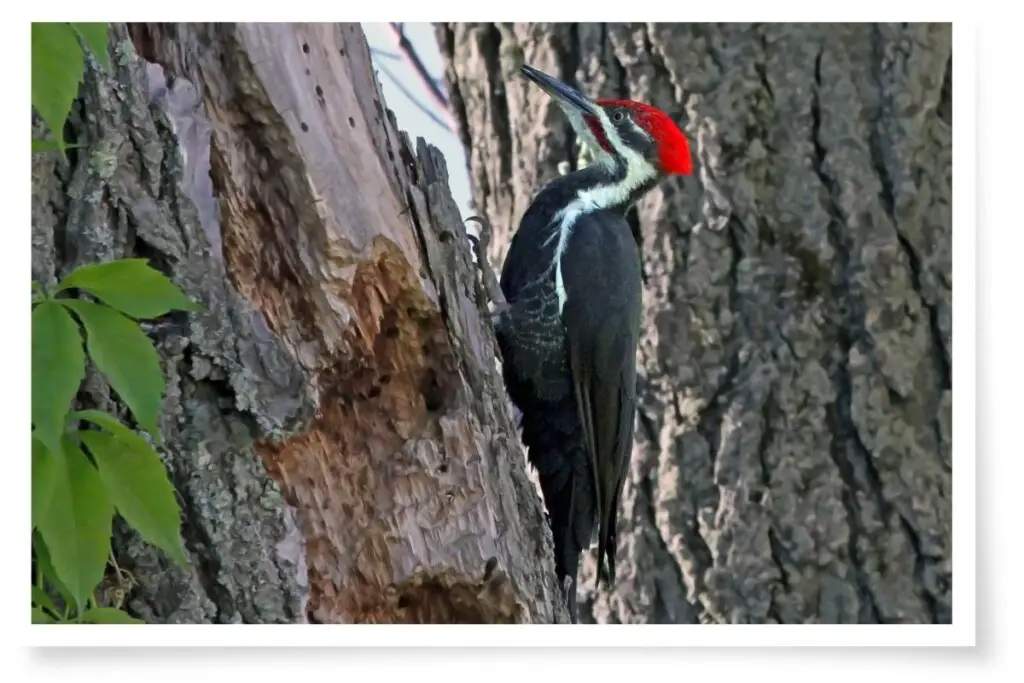
Description
The Pileated Woodpecker is the largest woodpecker found in New England. These birds are often described as being “crow-sized” and are around 40-49cm (15.7-19.3 in.) in length.
Mostly a dull black with a white streak extending from the beak, across the face, and down the neck. From below, these birds have a large oval white patch starting from where the wings join the body. It is the brilliant red crest of the pileated woodpecker that makes it stand out.
Pileated means this bird has a crest covering the pileum, the top of a bird’s head from the bill to the nape of the neck.
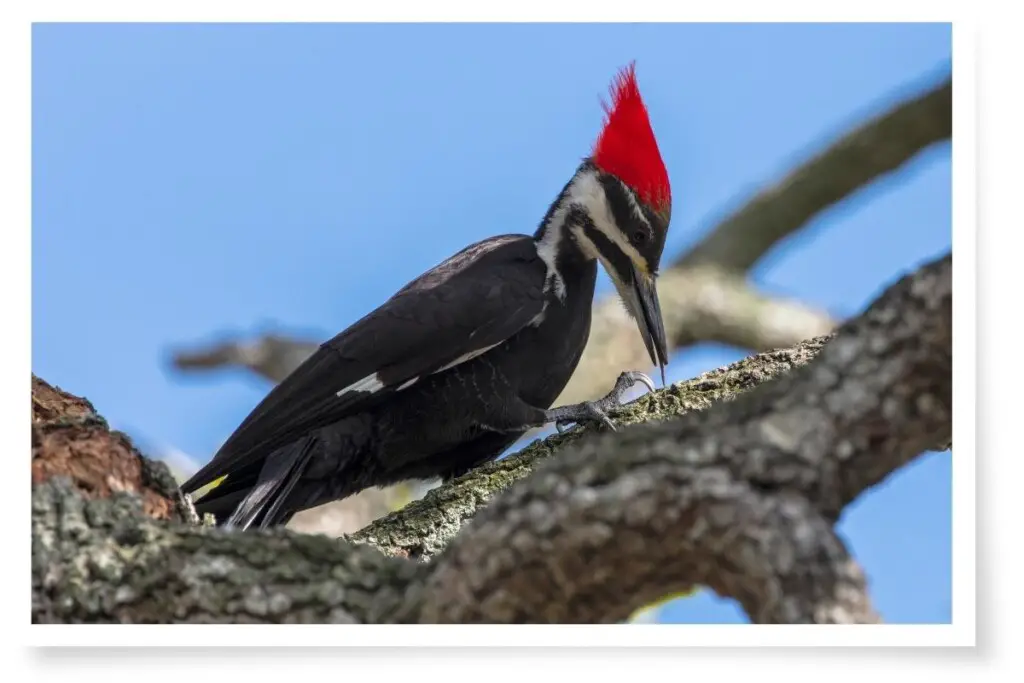
Calls
The calls of the pileated woodpecker are quite simple, consisting of only 1 or 2 syllables. Females produce a higher-pitched call than males.
Female Call
Male Call
Flight Call
Naturally, like all woodpeckers, the pileated woodpecker also makes a drumming sound when pecking at wood:
Drumming
In the drumming recording above, you can also hear the calls of Song Sparrows and a Chickadee.
Time Of Day They Are Heard
Pileated Woodpeckers will call to announce their territory early in the morning. You will also hear them in the evening on their way to roost.
It is not uncommon to hear woodpeckers drumming during the night.
Read the first article in this New England Bird Calls series here.
2. Red-breasted Nuthatch
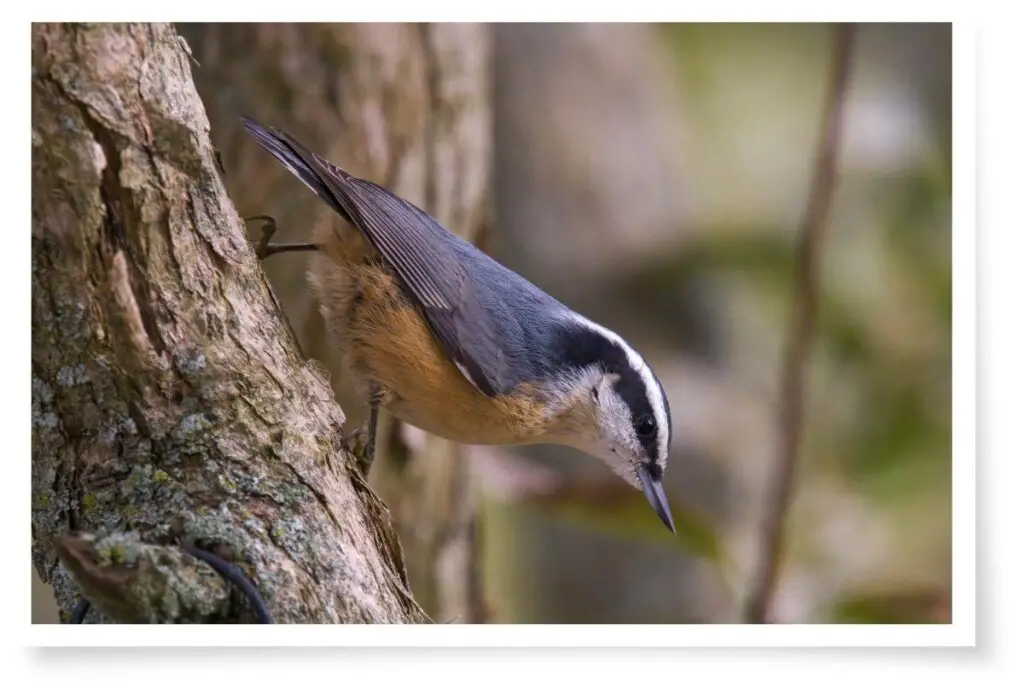
Description
The red-breasted nuthatch is a small nuthatch around 11.5cm (4.5 in.) in length.
In adult birds, the top of the head is black with a white stripe beneath, extending back to the nape of the neck. A black stripe extends back from their beaks, across the eyes, and back to the nape as well. Their upper parts are a blueish gray and underneath they are a rufous-cinnamon shade.
These birds are also known as the Canada Nuthatch or Red-bellied Nuthatch.
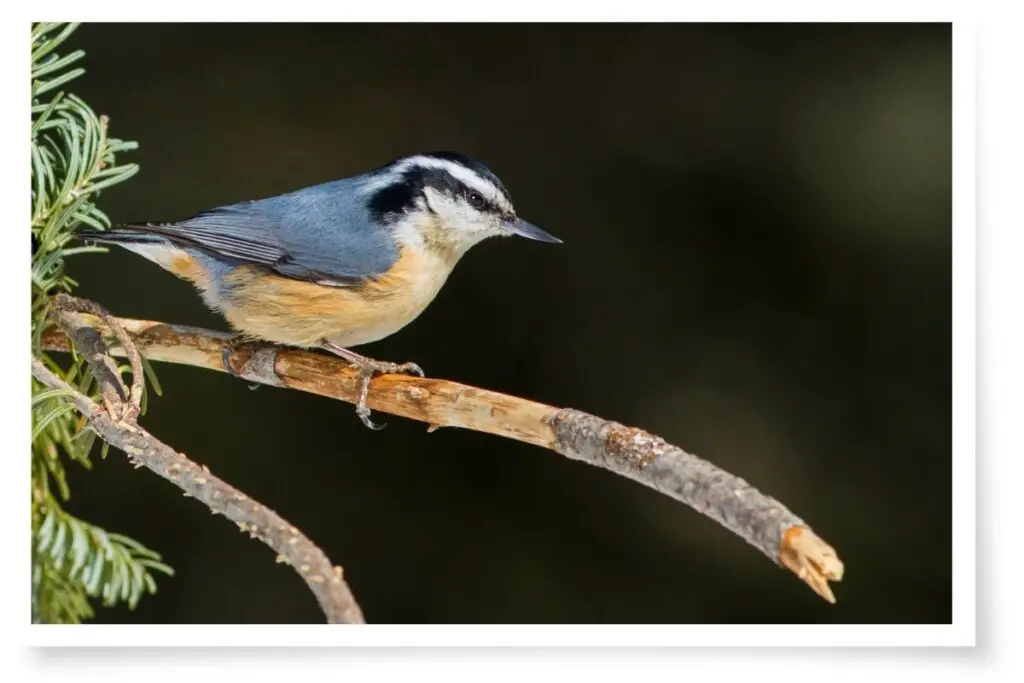
Calls
Some describe this bird as sounding like a small tin horn as their characteristic call is a nasal yank, yank. Both males and females produce a wide variety of sounds.
‘Yank, Yank‘ Call
Alarm Call

Contact Calls
Flight Call
Time Of Day They Are Heard
Male red-breasted-nuthatches will typically sing a mating song quite energetically at dawn. Generally, this will begin in March and may continue for many months as unmated males or those who have lost a mate will continue to sing until they find a mate.
You will hear these little trumpeters all throughout the day but they are mostly quiet at night.
Check out the second article in this series via this link.
3. Red-winged Blackbird

The aptly-named red-winged blackbird is just that – a black bird with a red patch on its wings. They are around 15-25cm (5.9-9.8 in.) long. The red patch on the bend of their wings is bordered by yellow.
Females are strikingly different from males as you can see in the image below:
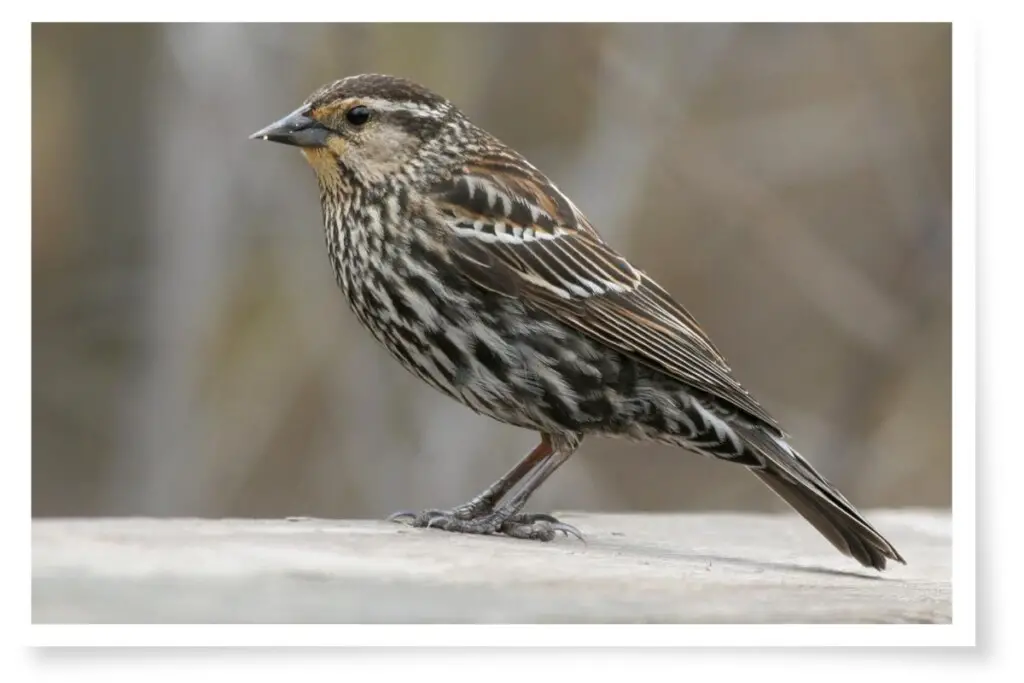
Red-winged blackbirds vary greatly in appearance depending upon sex, age, and geographic location.
Calls
Male and female red-winged blackbirds have an array of calls, some that are shared between the sexes and some unique to each.
Song
Adult Male Call
Alarm Call
To hear more beautiful calls of the red-winged blackbird, visit this page on Xeno-Canto.
Time Of Day They Are Heard
Like most songbirds, red-winged blackbirds will be more vocal at dawn and dusk. That being said, you may also hear them throughout the day and even at night.
4. Song Sparrow
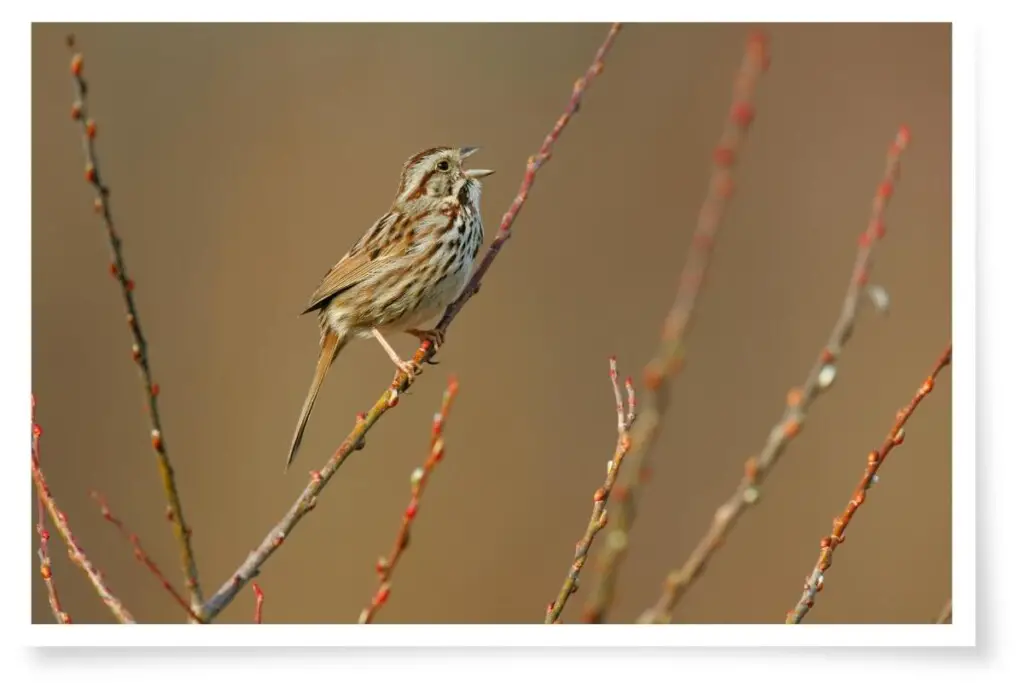
Description
The song sparrow is one of the most diverse and widespread songbirds in North America. They are around 12-17cm (4.7-6.7 in.) in length.
The appearance of these birds varies greatly from location to location. The images below show the differences across North America and Canada:
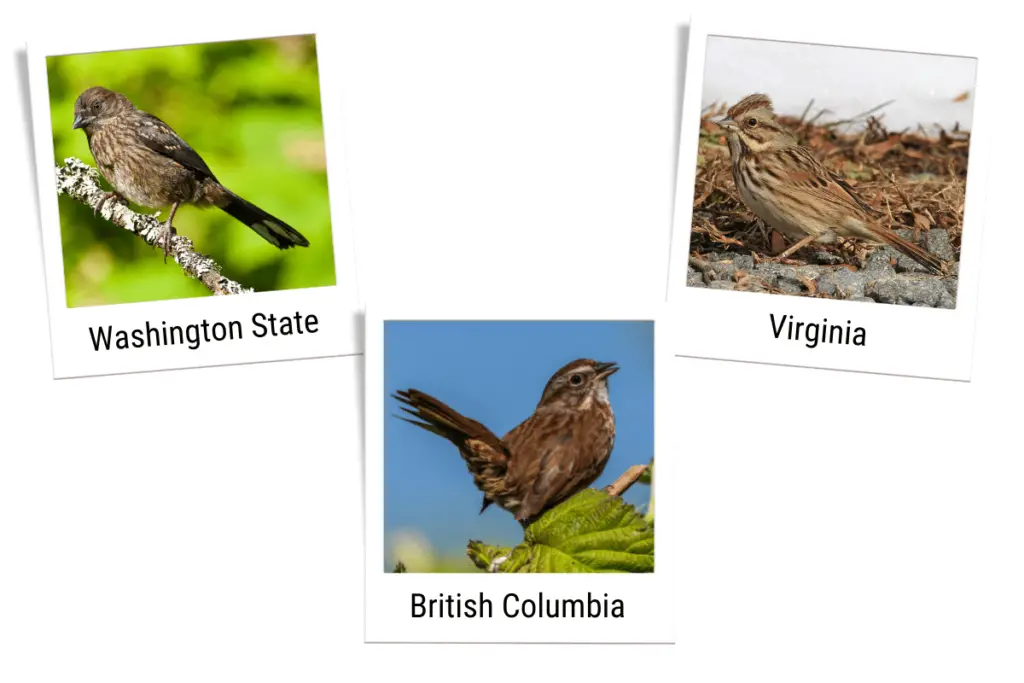
They are various shades of brown with streaking on their breasts. Their defining characteristic is perhaps their streaked faces which appear to be painted with warpaint.
Calls
With a name like “song sparrow“, how could these birds not have a wide variety of vocalizations?! They are in fact very skilled singers.
Song Example 1
Song Example 2
Song Example 3

Call
Alarm Call
You can enjoy many more calls and songs from song sparrows on this page over at the xeno-canto website.
Time Of Day They Are Heard
Song sparrows will typically sing only during daylight hours but will occasionally sing at night when breeding.
Similar to other songbirds, they will be most vocal early in the morning and their vocalization will decline as the day goes on.
Discover 20 common small American birds in this article here on my blog.
5. Tufted Titmouse
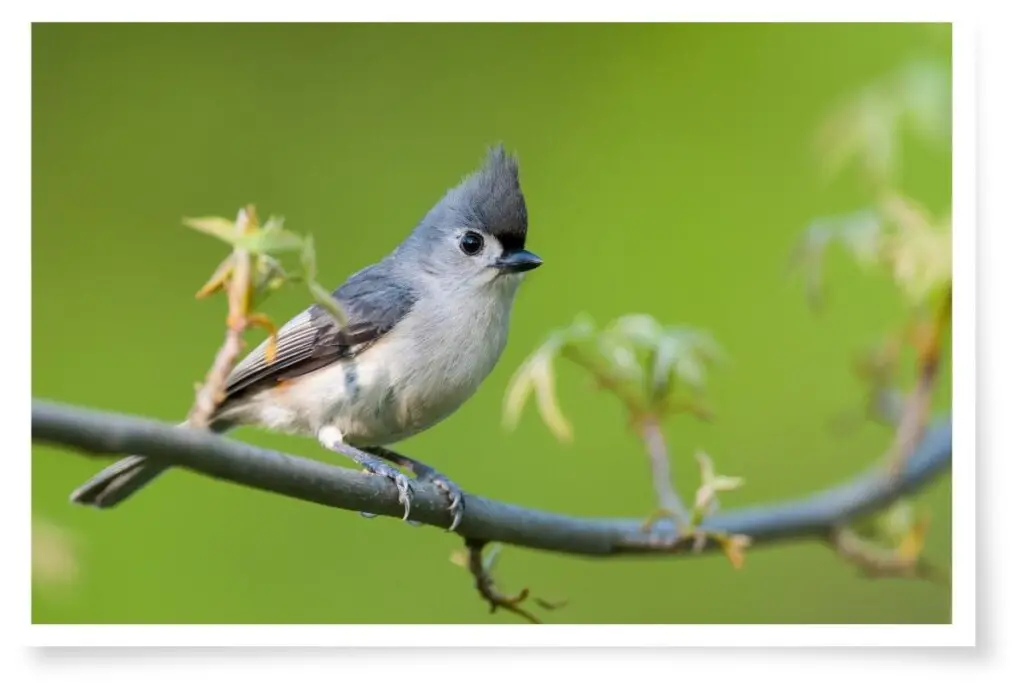
Description
One of the cutest year-round residents in New England, the Tufted Titmouse is a gorgeous little bird around 15 cm (5.9 in.) long.
They are not exceptionally colorful birds being pretty much gray all over, just lighter on the breast and belly. They do have a tiny rust-colored splash on their flanks which is their one touch of color.
In my opinion, it is that regal crest atop their heads; those big, brown eyes; and the black patch across their forehead that completes their cuteness.

Calls
Tufted titmice have around 13 different calls, one of which is a ‘chick-a-dee‘ they stole from some other American bird species. Or did they steal it from the titmice?
Actually, tufted titmice are related to chickadees, and they often hang out together; so it is not surprising they sound alike.
Song Example 1
Song Example 2
Call Example 1
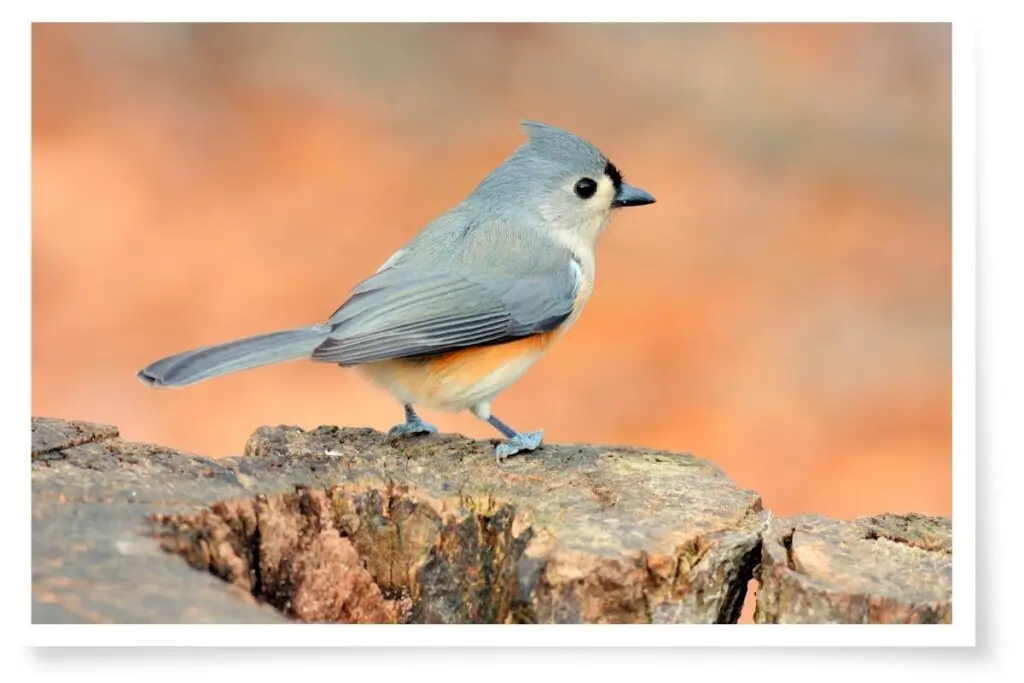
Chick-a-dee Call
Time Of Day They Are Heard
Tufted Titmice will be most vocal during the early morning and in the evening. You can hear them throughout the day but like most songbirds, they are less vocal during the middle of the day.
You generally won’t hear tufted titmice during the night.
6. White-Breasted Nuthatch

Description
The white-breasted nuthatch is around 15.5 cm (6.1 in.) in length. A striking bluish-gray, black, and white bird that spends a lot of its time hanging inverted from tree trunks.
Male birds have a black crown, which is generally grayish in females. As you can see in the above image, they also have a rusty-colored tinge to the underside of their tail feathers and the sides of their bellies.
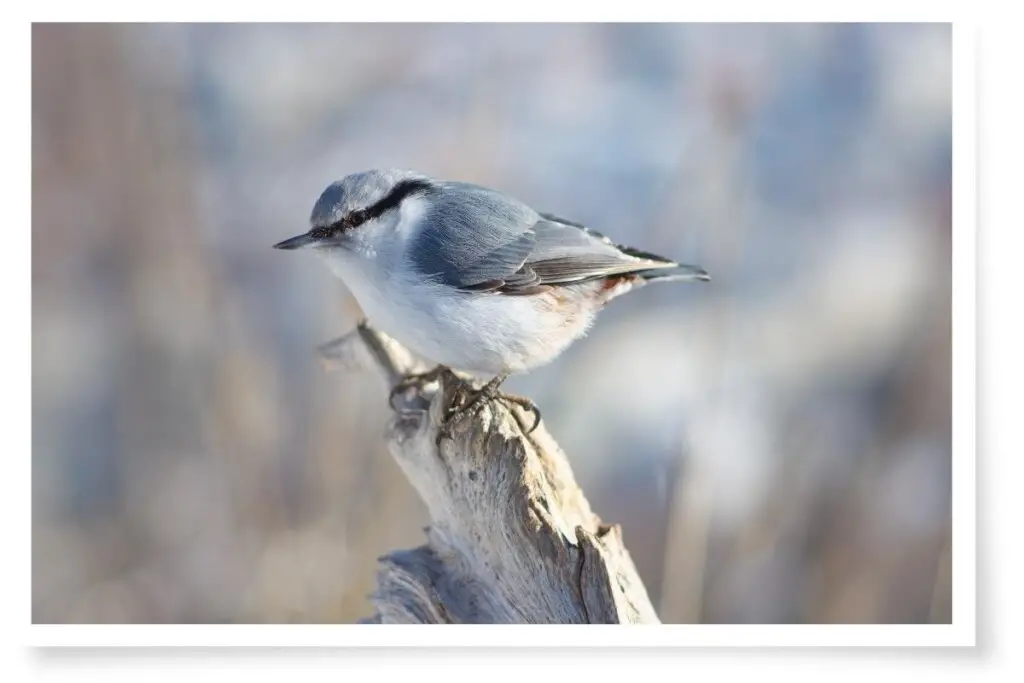
Calls
White-breasted nuthatches are generally quiet when breeding and during the summer months. In winter and spring, you will hear their simple song:
Song Example 1
Song Example 2
Call

Time Of Day They Are Heard
White-breasted nuthatches are another bird that is most vocal during the morning and at dusk. You will most likely not hear them at night.
7. White-Throated Sparrow
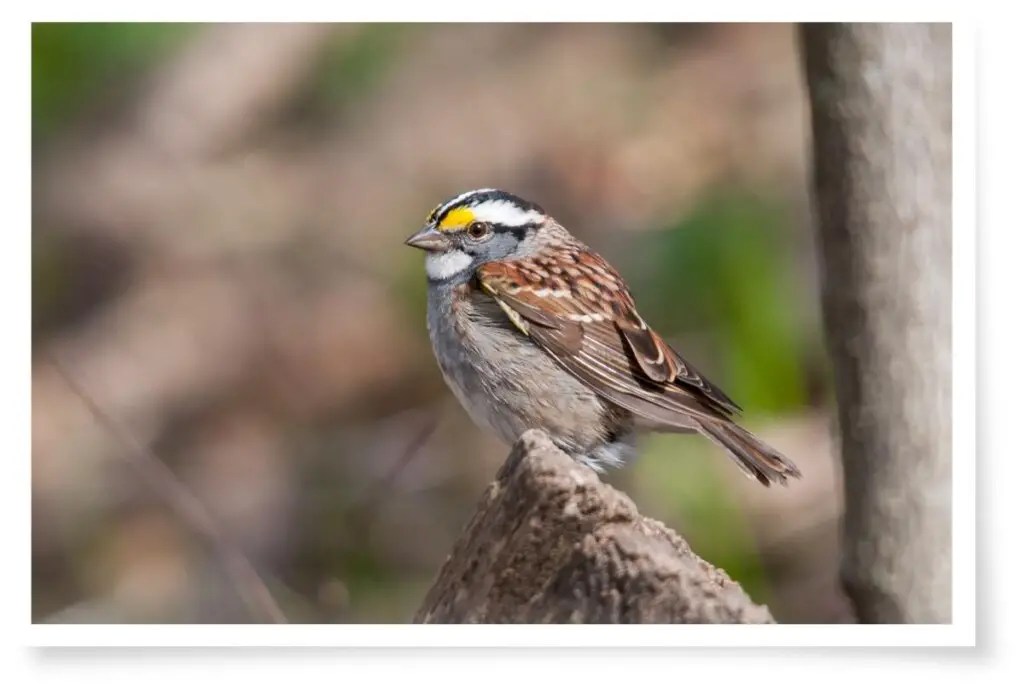
Description
The White-throated sparrow is a beautiful little bird around 16-18 cm (6.3-7.1 in.) in length.
For sparrows, they are quite colorful, depending on which plumage they are displaying. They have a white, tan, or gray crown stripe, bordered by black or dark brown striping.
Above and in front of each eye, they have small patches of yellow with white, tan, or gray stripes behind them leading back to the nape of their necks. Under their beaks is a white or pale white bib bordered by black lines.

The breasts of white-throated sparrows are gray, often streaked with brown. Their flanks are light brown and also streaked.
Underneath, their bellies are white. Their other defining feature is their backs which are chestnut streaked with black, the feathers tipped beige.
Calls
Song Example 1
Song Example 2

Call Example 1
Call Example 2
Time Of Day They Are Heard
These birds love to join in on the dawn chorus, starting as early as 3:30 AM in Algonquin Park, Ontario, CA?! They will also sing at dusk and are generally quiet during the dark hours.
8. Wild Turkey
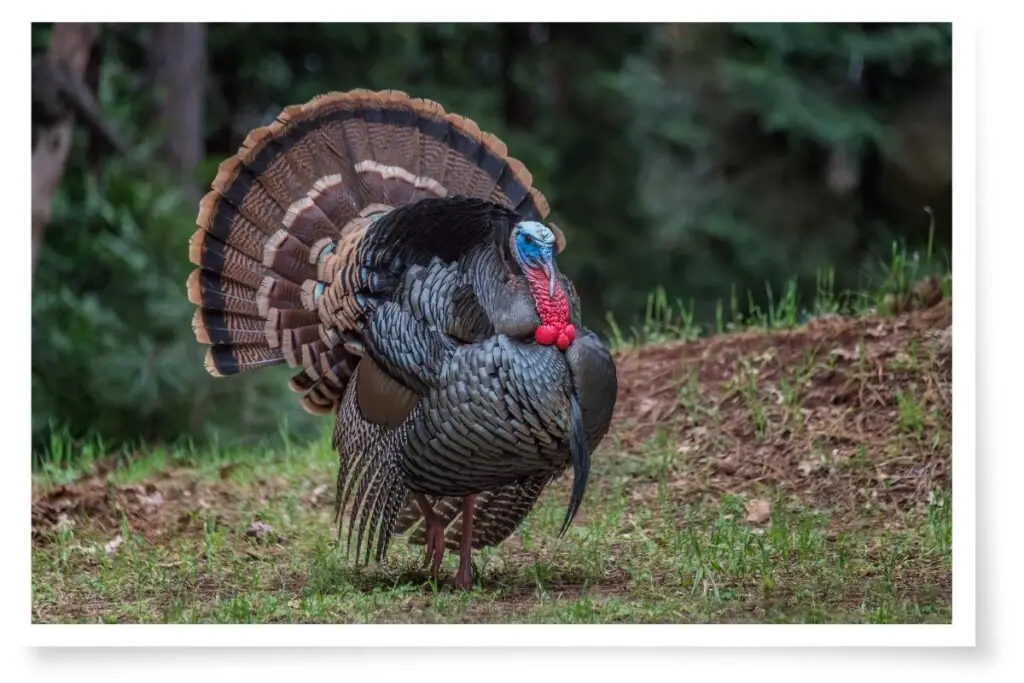
“Turkey,” you say? Stay with me, you will be surprised by the array of vocal sounds this bird can produce.
Description
The wild turkey is a large bird around 99-124 cm (39-49 in.) in length. It has long legs, a long neck, and a fan-shaped tail.
The skin of a turkey’s head and neck is carunculated (covered in fleshy skin growth) and they have what is called a snood; the fleshy appendage that extends over the beak.
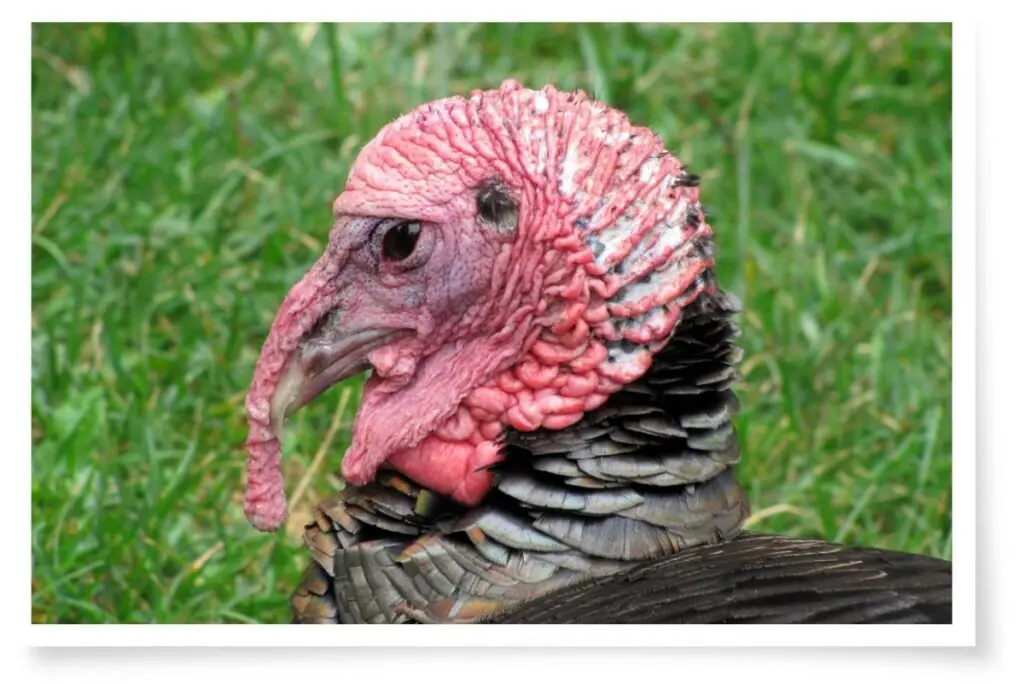
Their body feathers are metallic-iridescent and the males (and some females) have a tuft of course filaments that hang down from their chests like a beard.
Calls
Wild Turkeys are not just limited to the “gobble-gobble-gobble” sound we all know them for. They also cluck like chickens, squeak like parrots, and warble kind of like Australian Magpies.
Call Example 1
Call Example 2

Call Example 3
Clucking
Flock of foraging birds
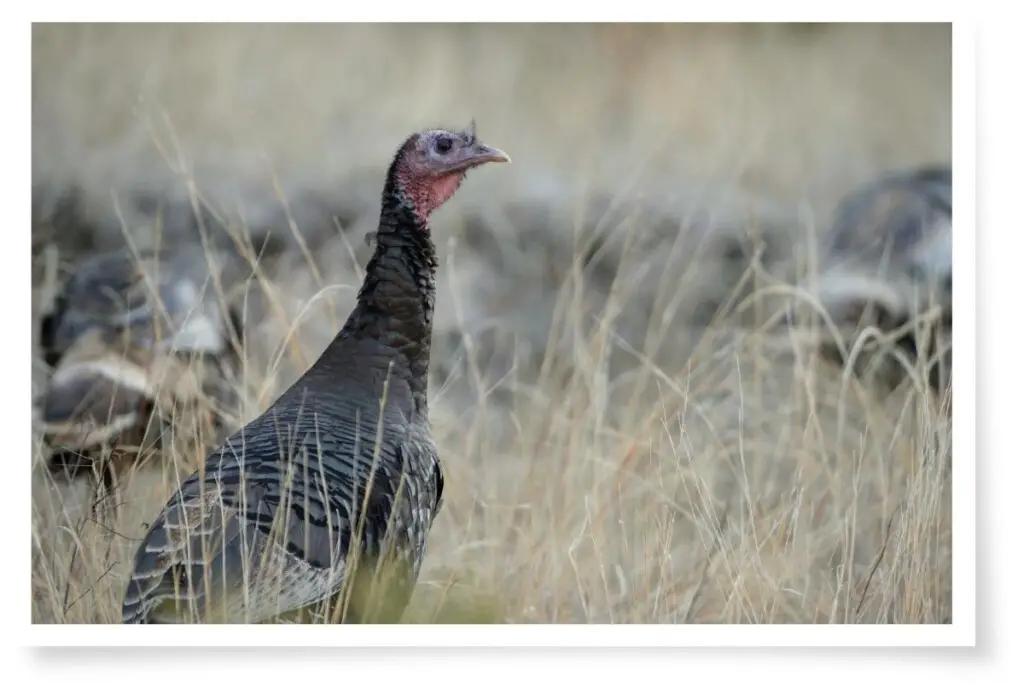
Time Of Day They Are Heard
Apparently, Turkeys are most vocal at temperatures between 60 and 69 degrees Fahrenheit. [1] So if it’s too hot or too cold, you won’t hear a lot from them.
Wild Turkeys will make sounds at any time of the day really. They even vocalize while roosting at night.
9. Wood Duck

Description
Wood Ducks are common birds that like riparian habitats (wetlands close to rivers and streams), wooded swamps, and freshwater marshes. They are small to medium-sized ducks around 48-54 cm (18.9-21.3 in.) in length.
Males in breeding plumage (Fall to late Spring) are a colorful array of green, purple, white, black, and burgundy, with a striking red iris.
Female wood ducks are brownish to gray and have a white patch around their eyes. Male ducks in basic plumage and juveniles look similar to females but lack the white eye patch.
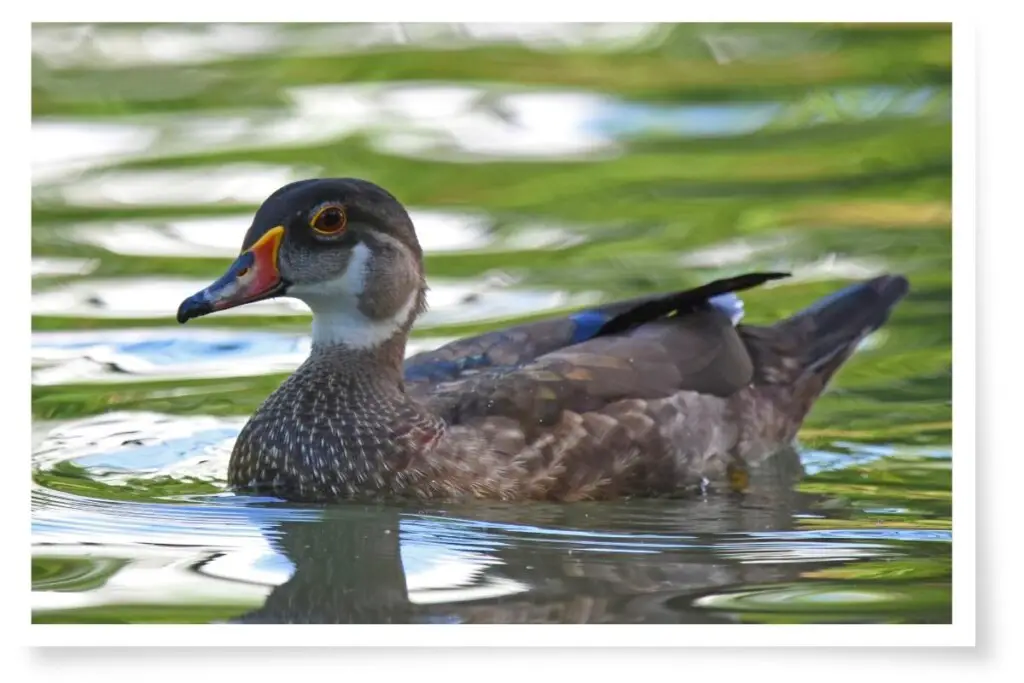
Calls
Wood ducks are not considered to have songs, only calls. Females actually have a number of calls that sound the same but are used for different purposes.

Call Example 1
Call Example 2
Alarm Call (Female)
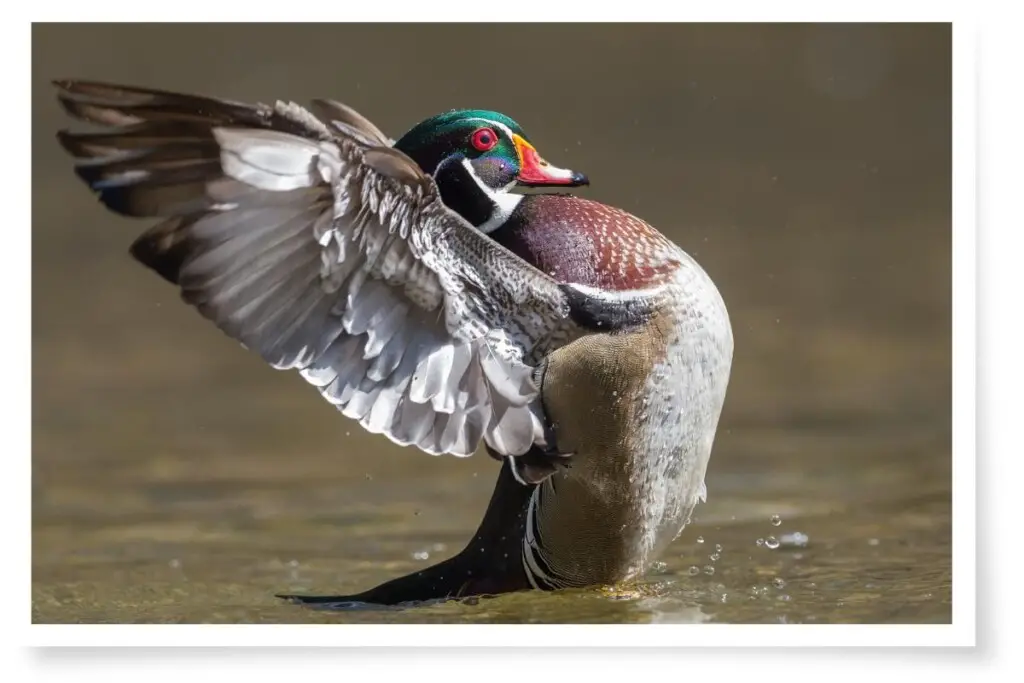
Time Of Day They Are Heard
Judging from the recordings at xeno-canto.org, wood ducks are vocal anytime from dawn until dusk. There were no recordings done at night, so I have to assume these birds are quiet during the dark hours.
10. Yellow-bellied Sapsucker

Description
Yellow-bellied Sapsuckers are small to medium members of the woodpecker family. They measure around 21-22 cm (8.3-8.7 in.) in length.
These mostly black and white birds are similar in appearance to the Downy and Hairy Woodpeckers:
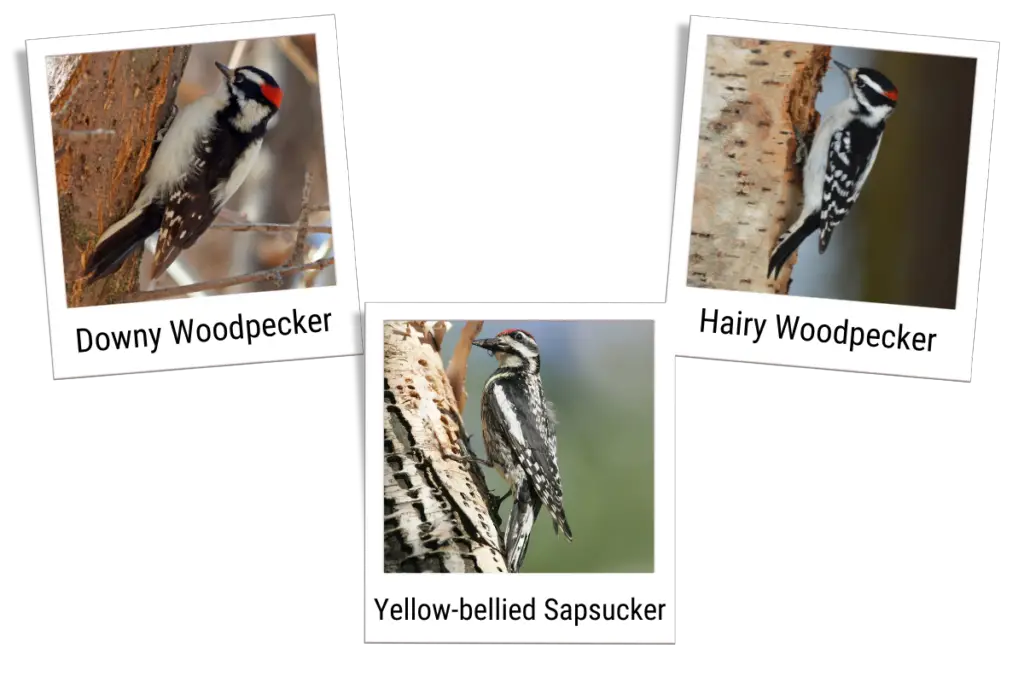
Unlike the other two woodpeckers, yellow-bellied sapsuckers have a prominent bar of white on their wings, a black bib, an entirely red crown, and barred backs and flanks. Of course, they also have a yellow-tinged belly.
If you sit and study the look of these three birds, yellow-bellied sapsuckers actually look entirely different from the other two. If you got a fleeting glimpse in the wild, however, it might be hard to tell the difference.
Calls
Yellow-bellied sapsuckers have a variety of calls. It is even possible to hear the faint calls of baby sapsuckers by pressing your ear to the trunk of a tree they are nesting in.
Call Example 1
Call Example 2

Juvenile Begging Call
Drumming Sound
Time Of Day They Are Heard
You will hear the yellow-bellied sapsucker throughout the day from dawn until dusk. The earliest recording on xeno-canto is a 4:40 AM recording from Alberta, Canada. At the time of year that was recorded, sunrise was around 5:30 AM.
The latest recording was at 10:00 PM, again in Alberta, Canada, but at the time of year it was recorded, this was just around sunset.
11. Myrtle Warbler
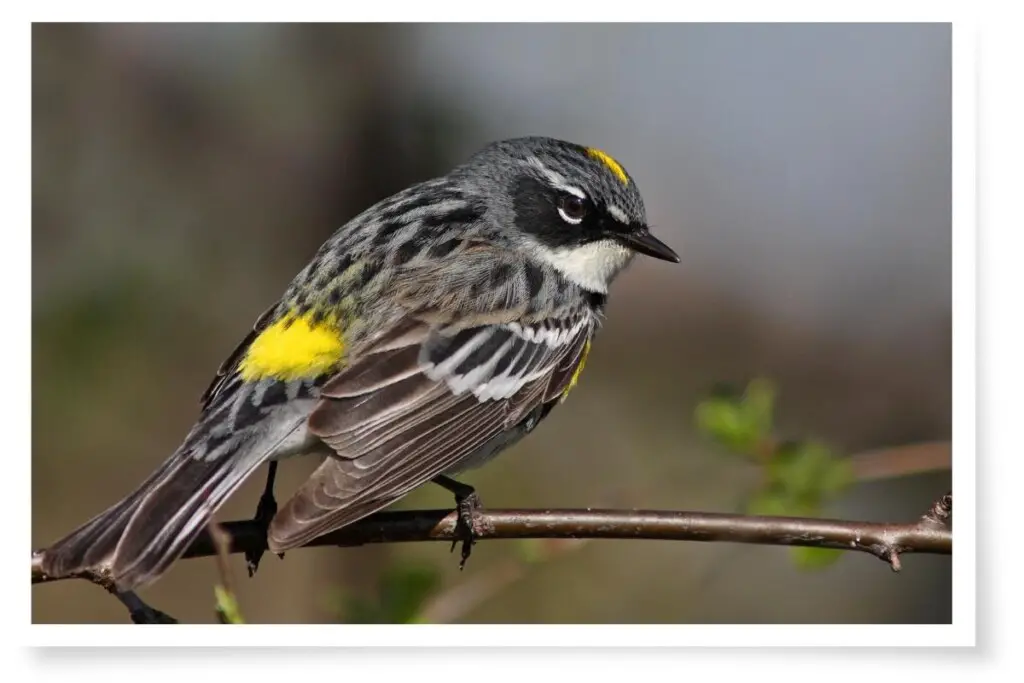
Description
Myrtle warblers were once thought to be a separate species from Audubon’s Warbler (found in the west), but they are now considered to be both Yellow-rumped Warblers.
They are mostly gray, black, and white. Their defining features are the patches of bright yellow they have on their crowns, sides, and rump. They also have a white throat patch (above image).
The Audubon’s warbler’s throat patch is yellow as seen in the image below.
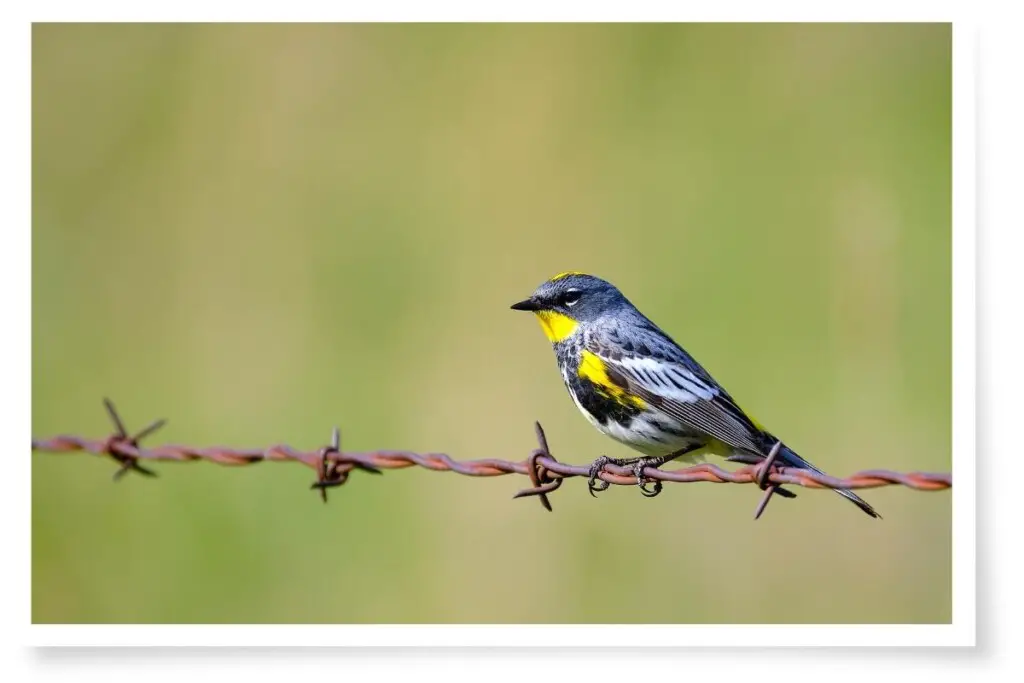
Calls
Only male myrtle warblers sing and seem to have two distinct songs.
Myrlte Warbler Song Example 1
Myrtle Warbler Song Example 2
Juvenile Call

‘Chip‘ Call
Calls and Song
Time Of Day They Are Heard
As myrtle warblers are songbirds, they will be heard mostly at dawn and dusk. They will be mainly quiet during the night though they will utter alarm calls if a threat is nearby.
Conclusion
Well, that concludes my New England bird calls series of articles. I hope that if you were looking for a particular bird sound you found it in one of these three posts. If you just came here out of curiosity, well I hope you enjoyed hearing all of the bird calls.
If you have not yet read the other articles in the series, you can find them at these links:
References
- Birds Of The World – The Cornell Lab Of Ornithology
- Xeno-canto – bird recordings


